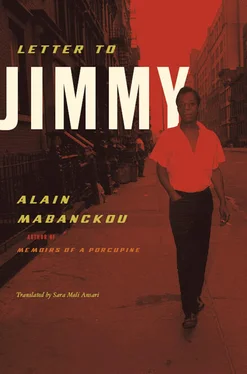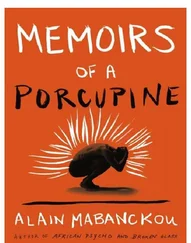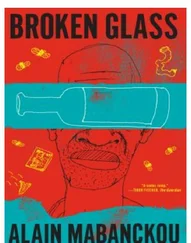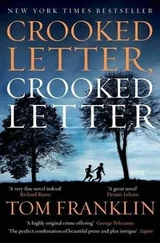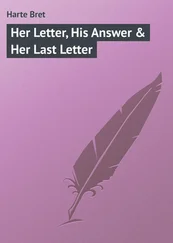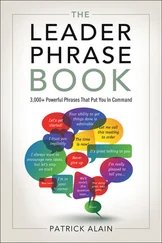“ The Fire Next Time ” opens the doors to everyone who wishes to understand your definition — if indeed you make one — of the black American as compared to his white countryman. The roar rising from the pages, the upheaval sparked by your ideas, and the crackling of an approaching fire are omens of things to come.
America is no fool: it has heard your message. But can it follow your lead? Is the book you have just written for or against America? Is this a book for your brothers of color, or against them? These questions are reminiscent of those that arose after the publication of Fanon’s The Wretched of the Earth, with the subtle difference that in his text, inhabitants of Martinique confront their colonizers. In order to encourage the latter to heed the book’s message, and indeed so that they understand that Fanon’s work is addressed to their brothers of color, Jean-Paul Sartre writes, “Europeans, open this book, and enter into it. After several steps into the darkness you will see strangers gathered around a fire. Approach them, and listen; they are discussing the fate in store for your shop counters, and for the men who guard them. They might see you, but they will continue to talk amongst themselves, without even so much as lowering their voices. . In these shadows, from which the sun will rise again, you are the walking dead.” 101
By the same token, America can no longer remain blind to the racial issue when it produces writers like you. The Fire Next Time warns of the dangers of the situation, but assures that all is not lost, that it is possible to elude the prophesy delivered in this song written by a slave:
And God gave Noah the rainbow sign
No more water, the fire next time. .
“The Fire Next Time” concludes with this scriptural prediction, from the very Bible that you know like the back of your hand.
And what if America did not listen? What would happen?
“Well, if this is so, one has no choice but to do all in one’s power to change that fate, and at no matter what risk — eviction, imprisonment, torture, death.” 102
These declarations are not unlike those of Malcolm X, who advocates obtaining rights by “whatever means necessary.” Herein lies the point of convergence that Albert Memmi points out in his introduction to your work.
•••
In his time, your colleague W.E.B. Du Bois asserted that the problem of the twentieth century was one between whites and blacks. “The Fire Next Time ” tempers this assertion by declaring that, “. . the value placed on the color of the skin is always and everywhere and forever a delusion,” 103though nevertheless the racial question remains vital in the United States, in these years of fire.
In Blues for Mister Charlie , you borrow from a racist news item that would have serious political reverberations. On August 28, 1955, Emmett Till, a black adolescent, is murdered. A month later, his murderers are acquitted in court after a sham trial; America is even more shocked that the criminals admit their evil deed as soon as they are released from custody. The hasty verdict legitimizes the battle for civil rights that has been waged for many years already. What murder could therefore better represent the state of race relations?
The fourteen-year-old Chicago native has come with his cousin to spend his vacation with his great-uncle in Money, Mississippi — home to William Faulkner, Tennessee Williams, and Elvis Presley, but also to a segregationist and Ku Klux Klan stronghold — Emmett Till is kidnapped in the middle of the night by Roy Bryant, a grocer, and his half brother, J.W. Milam. They beat Emmett to death before throwing his body, completely disfigured, into the Tallahatchie River, a heavy weight tied to his neck with a piece of barbed wire. A fisherman discovers the body several days later. Although the motives for the murder vary depending on the testimony — Roy Bryant’s wife maintains for example that the adolescent may have been disrespectful and might have spoken indecent words — was the punishment” administered to the young black boy by the husband and brother-in-law proportionate to the alleged provocation? Regardless of the answer, the fact remains that a human being has been killed. There was a crime. The motives are clearly racist.
Disregarding the pressures put upon her by the authorities, the mother of the boy demands that his casket remain open during the ceremony, so that everyone can comprehend the barbaric nature of the act that killed him.
The outrage generated by this heinous crime sparks an investigation by Medgar Evers and Amzie Moore, two members of the National Association for the Advancement of Colored People. They disguise themselves as farmers, in order to obtain evidence that might shed light on the death of the child. Their research led to the discovery of other black people murdered in the area, also lynched, then thrown into the river.
Then there was the trial. One must, no matter what, have faith in the country’s justice system.
The jury? Do not hold your breath: it is composed of twelve white men. These men acquit Roy Bryant and J.W. Milam after deliberations lasting just under an hour. One member of the jury, no doubt happy with the outcome, confesses upon exiting that he and his colleagues had to take a good “soda break” in order to reach a deliberation time that would be passable in the court of public opinion.
The verdict spreads unrest throughout America. The whole world is watching. What image will the country project of itself at a time when the international political context is the Cold War, and totalitarianism and attacks on individual liberties are more often than not attributed to the Soviet bloc, the world’s other superpower, who is now carefully eyeing Washington’s response? In any event, the sluggishness and awkwardness of the American administration at the time are bitterly criticized. Yet again America preaches freedom, railing against countries the world over for their barbarianism, while unable to fight against the most flagrant civil rights abuses within its own borders. 104
Blues for Mister Charlie uses these facts to set the scene for the murder of a young black musician, Richard, by a white grocery store owner, Lyle Britten.
Is this play inspired by anger, or written with a desire for revenge? To the contrary, you insert a brotherly message into the text through the character of the victim’s father, a staunch defender of civil rights, and whose friendship with a liberal white man aims to head off any hasty judgment or generalizations.
You dedicate the book to the civil rights activist Medgar Evers, a native of Mississippi, murdered that year, in 1963, five months after the publication of “The Fire Next Time.” This leader of the Civil Rights Movement fought tirelessly for the black cause. A patriot, too, he took part in the Normandy landings. The University of Mississippi, still segregated at this time, closed their doors to him all the same when he applied to study law there. Somewhat ironically, this same institution would be the first to admit a man of color, James Meredith, one year after the assassination of the black leader.
History will remember, too, that Medgar Evers was killed on June 12, 1963. Was the date inconsequential? No. Evers was assassinated several hours after President Kennedy’s televised speech in which he expressed his support for the Civil Rights Movement.
Blues for Mister Charlie received mixed reviews. You are criticized, as with The Fire Next Time, for fueling hatred toward whites, even though the heavily criticized play advocates tolerance and integration. At the time of its publication, the critic Walter Meserve sharply attacks your work as a playwright: “[Baldwin tries to] use theatre as a pulpit for his ideas. Mainly his plays are thesis plays — talky, over-written and clichéd dialogue and some stereotypes, preachy and argumentative.” 105
Читать дальше
